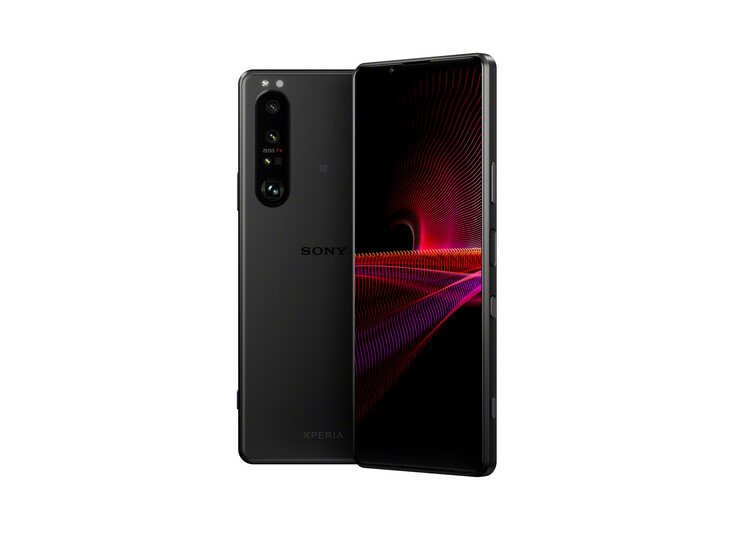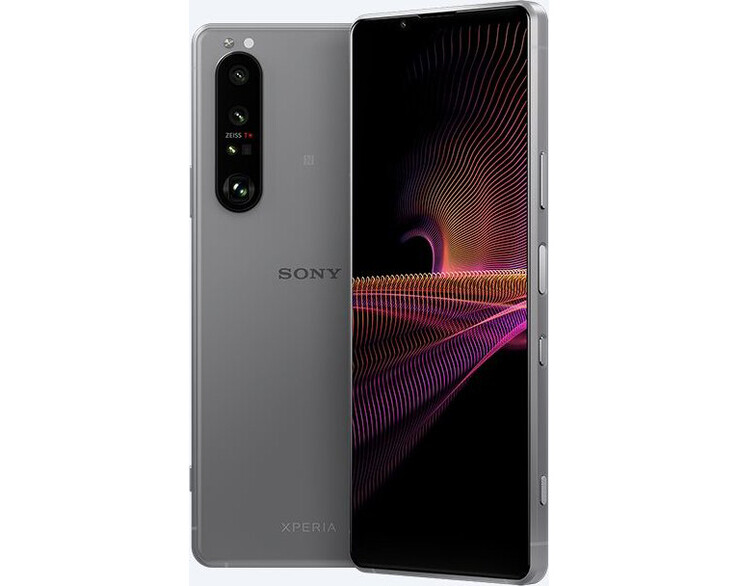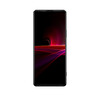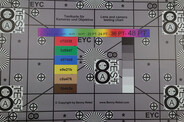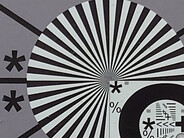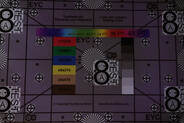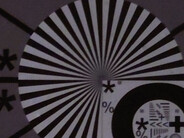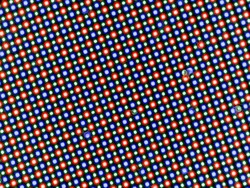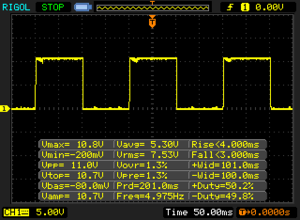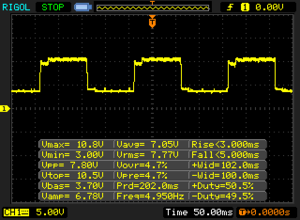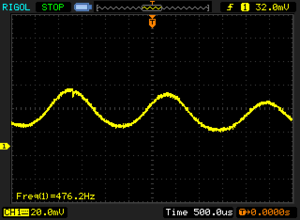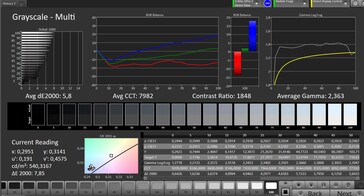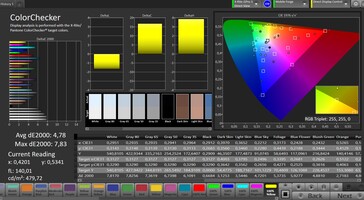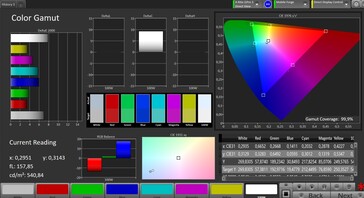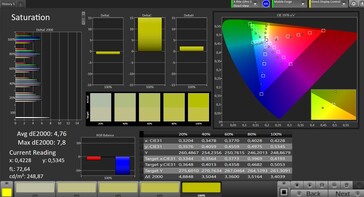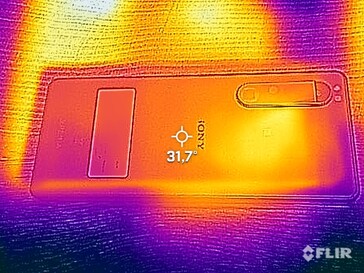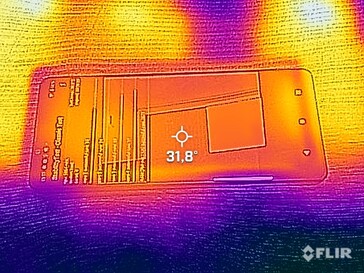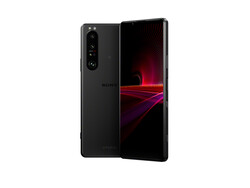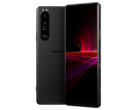Sony Xperia 1 III smartphone review - Camera phone with variable telephoto focal length
Possible competitors in comparison
Rating | Rating Version | Date | Model | Weight | Drive | Size | Resolution | Price from |
|---|---|---|---|---|---|---|---|---|
| 87.2 % v7 (old) | v7 (old) | 07 / 2021 | Sony Xperia 1 III SD 888 5G, Adreno 660 | 186 g | 256 GB UFS 3.1 Flash | 6.50" | 3840x1644 | |
| 85 % v7 (old) | v7 (old) | 09 / 2020 | Sony Xperia 1 II SD 865, Adreno 650 | 181.4 g | 256 GB UFS 3.0 Flash | 6.50" | 3840x1644 | |
| 89.2 % v7 (old) | v7 (old) | 06 / 2021 | Xiaomi Mi 11 Ultra SD 888 5G, Adreno 660 | 234 g | 256 GB UFS 3.1 Flash | 6.81" | 3200x1440 | |
| 88.7 % v7 (old) | v7 (old) | 12 / 2020 | Apple iPhone 12 Pro Max A14, A14 Bionic GPU | 228 g | 128 GB NVMe | 6.70" | 2778x1284 | |
| 90.4 % v7 (old) | v7 (old) | 02 / 2021 | Samsung Galaxy S21 Ultra Exynos 2100 5G, Mali-G78 MP14 | 227 g | 128 GB UFS 3.1 Flash | 6.80" | 3200x1440 |
Case, features and operation - Unique design in the Sony phone
Sony officially charges 1299 Euros (~$1530) for its smartphone. That is a lot of money, even though 12 GB of RAM and 256 GB of mass storage are on board.
The typical Sony design, which is a bit more angular and relies on a quite narrow but elongated screen, is also present in the Xperia 1 III. Compared to the predecessor, however, there is no longer a glossy back, but a chic matte surface. The slim design makes the phone feel good in the hand, and the smartphone is also well rounded at the corners. The large camera module clearly protrudes from the casing.
Thanks to IP68 certification, it is also possible to use the smartphone under water. Gorilla Glass Victus on the front, Gorilla Glass 6 on the back and a metal frame ensure a stable build.
Unusual for such an expensive smartphone: There is still a 3.5 mm audio jack, which can be used to connect microphones or headphones, for example. It is also nice that Sony has installed a USB-C port according to standard 3.1 Gen.1 so that data transfers via cable are faster. You can count on modern Bluetooth 5.2, 5G and NFC.
In terms of Wi-Fi, Sony also supplies a current standard with Wi-Fi 6. The transmission speeds that we ascertained with the reference router Netgear Nighthawk AX12 are on a high level, but do not stand out in comparison with other smartphones in the price range.
The smartphone is supposed to get Android updates for two years, which is okay, but manufacturers like Nokia show that even much cheaper devices can be provided with new software for longer.
| SD Card Reader - average JPG Copy Test (av. of 3 runs) | |
| Average of class Smartphone (5.72 - 58.9, n=67, last 2 years) | |
| Sony Xperia 1 III (Angelbird V60) | |
Cross Platform Disk Test (CPDT)
Cameras - Variable focal length and good image quality
The 12-megapixel main lens simply has large pixels and does not rely on a high resolution that combines pixels like other smartphones. This makes the camera a bit less flexible when you want to take extremely high-resolution pictures in good light.
In return, Sony's camera module has a color spectrum sensor and numerous software helpers that are supposed to ensure an even more accurate reproduction of reality. Also great is the physical, lightly ridged shutter button on the left lateral side, which triggers autofocus when pressed lightly, just like on a camera, and records an image or even a series of images when pressed fully.
And what quality do the pictures from the main camera have now? The light situation is reproduced very naturally, the iPhone 12 Pro Max tends to brighten up a lot, and at the same time, the main subject on the Apple looks much more detailed and also sharper. When looking at the sky in the surroundings, it is noticeable that Sony achieves a very good reproduction here; hardly any pixel artifacts can be seen even in the magnification. Here, for example, the OnePlus 9 Pro does a much worse job. Sony achieves a good brightening and detail reproduction in low light.
A wide-angle lens is also available, and it takes decent pictures. However, you should not enlarge them too much, as is the case with all current smartphone ultra-wide-angle lenses.
However, the telephoto lens that Sony installs in its smartphone is even more interesting: With optical image stabilizer and variable focal length, it is actually also the largest and most striking lens on the back. It enables good zoom options, you can actually bring objects in a picture closer in quite high quality.
Videos are recorded in 4K by the main camera. You can record with all lenses, but you have to choose a lens before recording. Only digital zoom is possible in the recording.
The Camera Pro software is now the standard photo app on the smartphone, it offers numerous setting options.
Image comparison
Choose a scene and navigate within the first image. One click changes the position on touchscreens. One click on the zoomed-in image opens the original in a new window. The first image shows the scaled photograph of the test device.
Main camera flowerMain camera environmentMain camera Low LightWide angle lens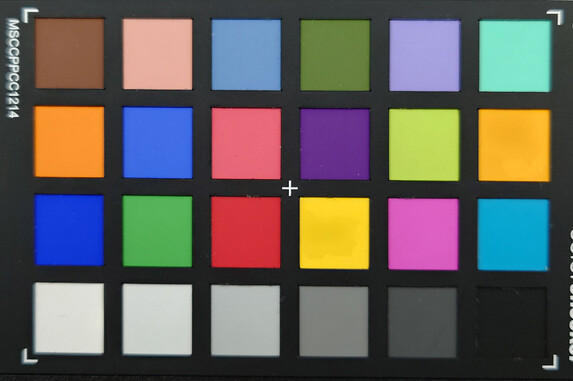
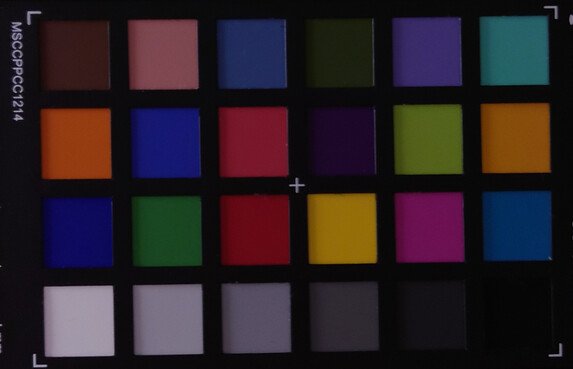
Display - cinema format with 120 Hz
The display of Sony's Xperia 1 III is also a special feature: It has a 21:9 format, which means it can natively display movies in the original format without borders. The resolution of 3,840 x 1,644 pixels is also on a very high level. The display is very accurate and sharp, but you cannot lower the resolution, which should lead to increased battery consumption. The display now also offers a 120 Hz refresh rate, but this can only be set to a fixed value, there is no variable mode like other manufacturers, which should also affect the runtimes.
The screen brightness is good, but still clearly below the level that other smartphone manufacturers achieve in Boost mode. The color reproduction is also only moderately accurate in the factory settings, but professionals can make numerous settings here: The white balance can be fine-tuned with many profiles and sliders, and the Creator mode is supposed to offer significantly improved image reproduction.
It is pleasing that the OLED flickers with a fairly high frequency even in very low brightness, so Sony's Xperia 1 III should cause fewer problems for sensitive users. The panel's response times are reasonable.
| |||||||||||||||||||||||||
Brightness Distribution: 95 %
Center on Battery: 537 cd/m²
Contrast: ∞:1 (Black: 0 cd/m²)
ΔE ColorChecker Calman: 4.78 | ∀{0.5-29.43 Ø4.78}
ΔE Greyscale Calman: 5.8 | ∀{0.09-98 Ø5}
99.9% sRGB (Calman 2D)
Gamma: 2.363
CCT: 7982 K
| Sony Xperia 1 III OLED, 3840x1644, 6.5" | Sony Xperia 1 II OLED, 3840x1644, 6.5" | Xiaomi Mi 11 Ultra AMOLED, 3200x1440, 6.8" | Apple iPhone 12 Pro Max OLED, 2778x1284, 6.7" | Samsung Galaxy S21 Ultra Dynamic AMOLED 2X, 3200x1440, 6.8" | |
|---|---|---|---|---|---|
| Response Times | -2% | 63% | -7% | 60% | |
| Response Time Grey 50% / Grey 80% * (ms) | 8 ? | 6 ? 25% | 3.2 ? 60% | 8 ? -0% | 3.2 ? 60% |
| Response Time Black / White * (ms) | 7 ? | 9 ? -29% | 2.4 ? 66% | 8 ? -14% | 2.8 ? 60% |
| PWM Frequency (Hz) | 476.2 | 240.4 | 510 ? | 238 | 250 ? |
| Screen | 11% | 54% | 57% | 54% | |
| Brightness middle (cd/m²) | 537 | 557 4% | 891 66% | 855 59% | 910 69% |
| Brightness (cd/m²) | 539 | 561 4% | 888 65% | 857 59% | 913 69% |
| Brightness Distribution (%) | 95 | 94 -1% | 99 4% | 98 3% | 98 3% |
| Black Level * (cd/m²) | |||||
| Colorchecker dE 2000 * | 4.78 | 2.86 40% | 1.9 60% | 1.1 77% | 2 58% |
| Colorchecker dE 2000 max. * | 7.83 | 7.29 7% | 3.7 53% | 2.51 68% | 3.1 60% |
| Greyscale dE 2000 * | 5.8 | 5 14% | 1.3 78% | 1.4 76% | 2.2 62% |
| Gamma | 2.363 93% | 2.171 101% | 2.3 96% | 2.187 101% | 2.06 107% |
| CCT | 7982 81% | 6993 93% | 6527 100% | 6337 103% | 6512 100% |
| Total Average (Program / Settings) | 5% /
8% | 59% /
57% | 25% /
41% | 57% /
55% |
* ... smaller is better
Display Response Times
| ↔ Response Time Black to White | ||
|---|---|---|
| 7 ms ... rise ↗ and fall ↘ combined | ↗ 4 ms rise | |
| ↘ 3 ms fall | ||
| The screen shows very fast response rates in our tests and should be very well suited for fast-paced gaming. In comparison, all tested devices range from 0.1 (minimum) to 240 (maximum) ms. » 20 % of all devices are better. This means that the measured response time is better than the average of all tested devices (20.2 ms). | ||
| ↔ Response Time 50% Grey to 80% Grey | ||
| 8 ms ... rise ↗ and fall ↘ combined | ↗ 3 ms rise | |
| ↘ 5 ms fall | ||
| The screen shows fast response rates in our tests and should be suited for gaming. In comparison, all tested devices range from 0.165 (minimum) to 636 (maximum) ms. » 19 % of all devices are better. This means that the measured response time is better than the average of all tested devices (31.6 ms). | ||
Screen Flickering / PWM (Pulse-Width Modulation)
| Screen flickering / PWM detected | 476.2 Hz | ||
The display backlight flickers at 476.2 Hz (worst case, e.g., utilizing PWM) . The frequency of 476.2 Hz is relatively high, so most users sensitive to PWM should not notice any flickering. However, there are reports that some users are still sensitive to PWM at 500 Hz and above, so be aware. In comparison: 53 % of all tested devices do not use PWM to dim the display. If PWM was detected, an average of 8108 (minimum: 5 - maximum: 343500) Hz was measured. | |||
Performance, emissions and battery life - Lots of power, but short runtimes
When it comes to performance, the Sony Xperia 1 III is not easily outdone: Both the Snapdragon 888, and the very fast UFS 3.1 storage are on a very high level. Sony cannot keep up with the current iPhone, but it is one of the fastest among the Android phones.
The temperature increases very selectively, but reaches up to 43.7 °C (~111 °F), which is clearly noticeable and could also become unpleasant in warmer ambient temperatures.
The Xperia Phone is HiRes Audio certified and supports numerous codes like Dolby Atmos to further improve the sound. The stereo speakers then also sound decent, they even show some bass frequencies in our measurement. You can also connect external devices via the 3.5 mm audio port or Bluetooth, where you get powerful sound that can also be improved with numerous settings. If desired, the smartphone even vibrates to match the music.
The battery, compared to the Sony Xperia 1 II, has grown by 500 to 4,500 mAh, which also extends the runtime in our WLAN test. However, only as long as you do not activate the 120 Hz mode: Then you should expect runtimes that can even be below the predecessor's level. Even in 60 Hz mode, all other comparison devices still last longer.
The Sony Xperia 1 III can be charged with a maximum of 30 watts. That is okay, but in view of charging rates of up to 67 watts in the current Xiaomi flagship, it does not seem quite up to date. Wireless charging is also possible with a maximum of 15 watts.
| Sony Xperia 1 III | Sony Xperia 1 II | Xiaomi Mi 11 Ultra | Samsung Galaxy S21 Ultra | Average 256 GB UFS 3.1 Flash | Average of class Smartphone | |
|---|---|---|---|---|---|---|
| AndroBench 3-5 | -35% | 1% | 10% | 15% | 46% | |
| Sequential Read 256KB (MB/s) | 1948 | 1512 -22% | 1928 -1% | 1710 -12% | 1757 ? -10% | 2228 ? 14% |
| Sequential Write 256KB (MB/s) | 742 | 396.4 -47% | 756 2% | 1077 45% | 1204 ? 62% | 1852 ? 150% |
| Random Read 4KB (MB/s) | 267.8 | 196.4 -27% | 259.3 -3% | 316.7 18% | 287 ? 7% | 296 ? 11% |
| Random Write 4KB (MB/s) | 316.8 | 181.5 -43% | 329.7 4% | 279.5 -12% | 318 ? 0% | 339 ? 7% |
Temperature
(+) The maximum temperature on the upper side is 39.9 °C / 104 F, compared to the average of 35.2 °C / 95 F, ranging from 21.9 to 247 °C for the class Smartphone.
(±) The bottom heats up to a maximum of 43.7 °C / 111 F, compared to the average of 34 °C / 93 F
(+) In idle usage, the average temperature for the upper side is 25.8 °C / 78 F, compared to the device average of 32.9 °C / 91 F.
Speaker
Sony Xperia 1 III audio analysis
(±) | speaker loudness is average but good (81.5 dB)
Bass 100 - 315 Hz
(-) | nearly no bass - on average 25.4% lower than median
(±) | linearity of bass is average (11.9% delta to prev. frequency)
Mids 400 - 2000 Hz
(+) | balanced mids - only 4% away from median
(+) | mids are linear (4.8% delta to prev. frequency)
Highs 2 - 16 kHz
(+) | balanced highs - only 3% away from median
(+) | highs are linear (6% delta to prev. frequency)
Overall 100 - 16.000 Hz
(±) | linearity of overall sound is average (19.3% difference to median)
Compared to same class
» 26% of all tested devices in this class were better, 9% similar, 65% worse
» The best had a delta of 11%, average was 35%, worst was 134%
Compared to all devices tested
» 46% of all tested devices were better, 8% similar, 47% worse
» The best had a delta of 4%, average was 24%, worst was 134%
Sony Xperia 1 II audio analysis
(±) | speaker loudness is average but good (78.3 dB)
Bass 100 - 315 Hz
(-) | nearly no bass - on average 27.7% lower than median
(±) | linearity of bass is average (11.5% delta to prev. frequency)
Mids 400 - 2000 Hz
(+) | balanced mids - only 2.5% away from median
(±) | linearity of mids is average (7.2% delta to prev. frequency)
Highs 2 - 16 kHz
(+) | balanced highs - only 2% away from median
(+) | highs are linear (3.8% delta to prev. frequency)
Overall 100 - 16.000 Hz
(±) | linearity of overall sound is average (21.8% difference to median)
Compared to same class
» 44% of all tested devices in this class were better, 8% similar, 48% worse
» The best had a delta of 11%, average was 35%, worst was 134%
Compared to all devices tested
» 61% of all tested devices were better, 7% similar, 32% worse
» The best had a delta of 4%, average was 24%, worst was 134%
Battery life
| Sony Xperia 1 III 4500 mAh | Sony Xperia 1 II 4000 mAh | Xiaomi Mi 11 Ultra 5000 mAh | Apple iPhone 12 Pro Max 3687 mAh | Samsung Galaxy S21 Ultra 5000 mAh | Average of class Smartphone | |
|---|---|---|---|---|---|---|
| Battery Runtime | ||||||
| WiFi Websurfing (h) | 8.9 | 7.8 -12% | 10.8 21% | 16 80% | 11.7 31% | 19.3 ? 117% |
Pros
Cons
Verdict - Not quite a perfect professional tool
As with the last generations of Sony's flagship, you get the feeling that Sony really delivers a great smartphone with unique features on the one hand, but lags behind the competition a bit on the other: You can hardly get such a high-resolution display in cinema format anywhere else, but the battery life suffers in return. The camera takes great pictures and the new telephoto lens allows zooming into objects in good quality, but at the same time the details are not always perfect.
The charging power is only passable at 30 watts, the battery is a bit smaller than other manufacturers and the temperature is a bit too high. Sony also installs some potentially unnecessary third-party apps ex-factory and charges a self-confident price of 1,299 Euros (~$1530).
But enough complaining, after all, the Sony Xperia 1 III also has its great sides: The unique design looks very high-quality, the physical camera shutter is simply ingenious, the smartphone works lightning fast, and so does the storage. A 3.5 mm port is hard to find in any other flagship phone, and Sony's Xperia 1 III is also relatively light.
Sony's flagship in 2021 is a high-quality camera phone that does a few things differently than the competition.
Sony's Xperia 1 III is certainly not a phone for everyone, but Sony deliberately wants to appeal to individualists and professionals. They should take a look at the high-quality and powerful smartphone.
If you want to save money, do not need a 120 Hz display and want a slightly shorter battery life, you can also go for the predecessor Sony Xperia 1 II. If you are looking for a slightly less fancy flagship phone, you will be better off with the Samsung Galaxy S21 Ultra or the Apple iPhone 12 Pro Max.
Price and availability
Sony Xperia 1 III
- 08/31/2022 v7 (old)
Florian Schmitt




